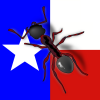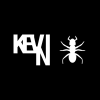Quick backstory: I found (what I think is) a Pheidole bicarinata at the end of July. I made a plaster formicarium in the bottom of a critter carrier before learning that Pheidole sp. need a small formicarium, and the one I made is waaaaaay too big. So in thinking about small spaces that might make a good space for a formicarium, I remembered watching this video on YouTube where a guy makes a terrarium inside a light bulb, and I thought making a formicarium in a light bulb would look really cool, and a small ant like a Pheidole sp. could be able to use it for a long time.
So here are some issues that I'm trying to work out the details on how to build it that I am hoping some of you more experienced people can help me with:
- Composition: I found this video on YouTube of someone actually making a naturalistic formicarium in a light bulb, but I immediately saw some problems with it. The biggest problem I saw is that it's just going to grow mold, and being such a small amount of dirt, I don't think it's possible to have a population of springtails or anything like that to manage it. So I am leaning towards constructing the interior of the formicarium rather than just filling it with digging medium. I still have a bunch of plaster left over from making my way-too-big formicarium, so I was considering how to build it out of plaster. But if you think it would be possible for a dirt formicarium to work without mold just running rampant, please hit me up. I'd love to talk it over and give it a try.
- Casting: Assuming that I am going to construct the formicarium from plaster or something similar (and if you think there is a better option than plaster, I'd love to consider it), my biggest concern is how to shape the chambers. To form the chambers in my big plaster formicarium, I just used wet sand to take up the space I wanted for the tunnels and poured the plaster over it. But that worked well because I could remove the plaster from the critter carrier after it had set and brush/wash the sand out to clear the tunnel space. I won't be able to do that with a light bulb, and I don't want to have all the tunnels packed with sand and just hope that the ants do what I want them to do (clear out the sand so that they can move in). I've seen enough of all your posts to know ants are never that agreeable.
 So I am considering a couple options: wax or sugar. I'm afraid that I wouldn't be able to completely melt out the wax, and it would leave a coating on the surface that would prevent water in the plaster from humidifying the formicarium, so I'm leaning towards sugar. I can just use repeated hot water rinses through the tunnels to dissolve the sugar to clear out the chambers without needing to removing the plaster from the bulb. But maybe sugar residue would promote bacteria or something else in the formicarium? So maybe salt would be better? I'm just afraid that salt residue would be harmful by osmotic pressure to dehydrate the ants. (It's worth noting here that I can't count on the ants slurping up the sugar residue like it were honeydew because I seem to have one of the ridiculous species of ants that somehow doesn't like honey and other sugary things. Go figure.)
So I am considering a couple options: wax or sugar. I'm afraid that I wouldn't be able to completely melt out the wax, and it would leave a coating on the surface that would prevent water in the plaster from humidifying the formicarium, so I'm leaning towards sugar. I can just use repeated hot water rinses through the tunnels to dissolve the sugar to clear out the chambers without needing to removing the plaster from the bulb. But maybe sugar residue would promote bacteria or something else in the formicarium? So maybe salt would be better? I'm just afraid that salt residue would be harmful by osmotic pressure to dehydrate the ants. (It's worth noting here that I can't count on the ants slurping up the sugar residue like it were honeydew because I seem to have one of the ridiculous species of ants that somehow doesn't like honey and other sugary things. Go figure.) - Hydration: How to hydrate them is another big concern. I was thinking of making a water reservoir in the bottom not connected with the tunnels to wick through the plaster for humidity. I figure I could cast a coffee straw (or 2? one to fill with and the other to allow air to escape out as I fill?) into it for easy filling. I think I'll also have to put a thin layer of plaster between the reservoir and the glass to contain it completely (as opposed to just making a layer of plaster on top to separate it from the rest of the formicarium). The reason is that I think just a cap layer won't prevent the reservoir from flowing up into and flooding the chambers above if the bulb gets tipped (I think it will look better tipped at an angle than straight up and down anyway), and I've taken note from many of you with Pheidole sp. that they drown super easily in just a little standing water. So I want to avoid that (obviously).
So those are my main concerns and proposed solutions, but before I give it a (probably disastrous) try, I wanted to see if any of you have experience with such a construction and might have tips for me.
Edited by EllisWyatt, January 1 2018 - 4:40 PM.



























